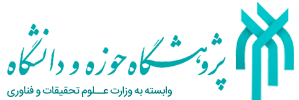



بررسی الگوی تحول دانش در حوزه تمدن اسلامی (جهت بازپردازی خط مشیهای تحول در علوم انسانی
Study of Knowledge Evolution Model in Islamic Civilization to Revise the Policies of Human Sciences Evolution
دغدغۀ تحول در علوم به ویژه در علوم انسانی به بیش از نیمقرن برمیگردد. در ایران نیز این موضوع در دستور کار حکومت و برخی اندیشمندان قرار گرفته و ایدههای متنوعی برای به نتیجه رساندن آن پیشنهاد گردیده است. تحقیق حاضر کوشیده است تا با رویکردی تاریخی و با درسآموزی از یکی از الگوهای موفق انتقال و تحول دانش، یعنی تاریخ نهضت ترجمه (قرن دوم تا پنجم هجری) و واکاوی نقش و نحوۀ تعامل حکومتها با نهاد علم آن زمان، دلالتهایی برای خطمشیگذاران امروز در عرصۀ تحول در علوم انسانی فراهم آورد.
به این منظور با استفاده از روش تحقیق دلالتپژوهی و الگوی جامعهشناسی علم مرتون به تحلیل بازیگران عرصۀ تحول علم، با تأکید بر نحوۀ انتقال و تحول دانش فلسفه، پرداخته شده است.
پیشنهاد محوری تحقیق بر پایۀ الگوی «ترجمۀ تحولگرا» است که تحول را از مسیر گزینش هوشمند، ترجمۀ دقیق، تصحیح ترجمهها، تلخیص متون، شرح، نقد و نوآوری (در سطوح خرد تا تأسیس رشته) دنبال میکند.
Mohammad Mehdi Shahabadi
The concern of transformation in sciences, especially in human knowledge, goes back more than half a century. The current research has tried to use a historical approach and by lesson drawing from one of the successful models of knowledge transfer and transformation, that is, the history of the Translation Movement (Nehzat_e Tarjome) and analyzing the way of interaction of governments with the institution of science, propose implications for today's policy-makers in the field of human knowledge transformation.
For this purpose, by using the implication research method and Merton's model of sociology of science, the actors in the field of science evolution have been analyzed, with an emphasis on the transfer and evolution of philosophy knowledge.
The central proposal of the research is based on the "Transformational Translation (Transforlation)" model, which follows the evolution from the path of intelligent selection, accurate translation, correction of translations, summarization of texts, description, criticism and innovation (at micro levels until the establishment of the Scientific field).
